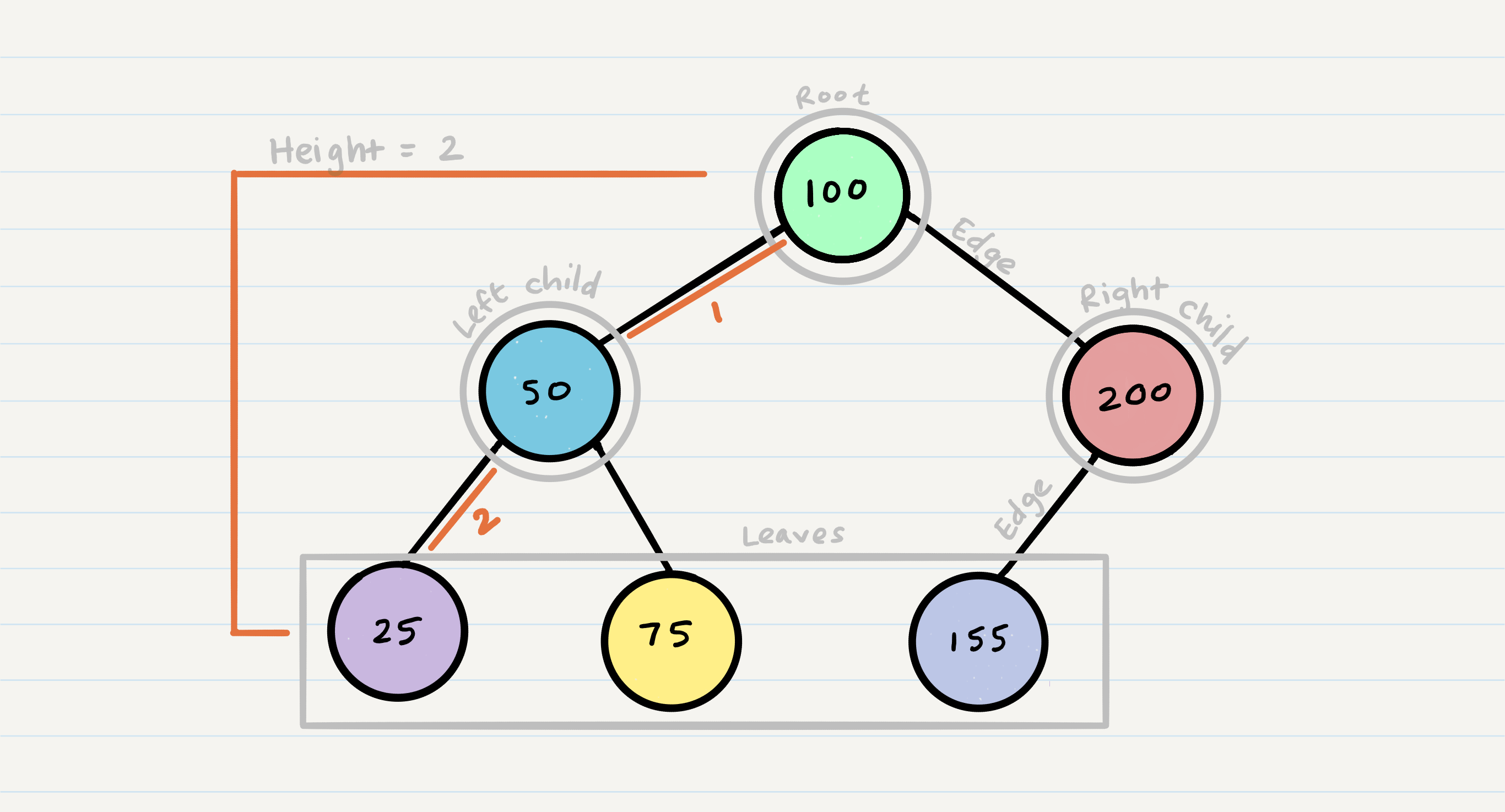reading-notes
Trees
-
A tree is a representation of the non-linear data structure. A tree can be shown using different user-defined or primitive types of data.
-
We can use arrays, and classes connected lists or other kinds of data structures to implement the tree. It is a group of interrelated nodes.
Common Terminology
- Node - A Tree node is a component which may contain it’s own values, and references to other nodes
- Root - The root is the node at the beginning of the tree
- K - A number that specifies the maximum number of children any node may have in a k-ary tree. In a binary tree, k = 2.
- Left - A reference to one child node, in a binary tree
- Right - A reference to the other child node, in a binary tree
- Edge - The edge in a tree is the link between a parent and child node
- Leaf - A leaf is a node that does not have any children
- Height - The height of a tree is the number of edges from the root to the furthest leaf
Traversals
Traversing a tree allows us to search for a node, print out the contents of a tree, and much more.
There are two categories of traversals:
Consider the tree:
A
/ \
B C
/ / \
D E F
- Depth First : A depth first traversal would visit the nodes in this order
A, B, D, C, E, FNotice that you go all the way down one leg before moving on.
and there is three methods for depth first traversal:
Pre-order: root » left » right In-order: left » root » right Post-order: left » right » root
- Breadth First : Breadth first traversal iterates through the tree by going through each level of the tree node-by-node.
A, B, C, D, E, F
The difference between the two traversal orders lies in the choice of Container.
For depth first use a stack. (The recursive implementation uses the call-stack…) For breadth-first use a queue.
Binary Tree Vs K-ary Trees
Trees can have any number of children per node, but Binary Trees restrict the number of children to two (hence our left and right children).
K-ary Trees If Nodes are able have more than 2 child nodes, we call the tree that contains them a K-ary Tree. In this type of tree we use K to refer to the maximum number of children that each Node is able to have.
Adding a node
- It does not matter where to add new node in tree.
- It will go down to the children and start adding from left to right.
Big O
- The Big O time complexity for inserting a new node is O(n).
- The Big O space complexity for a node insertion using breadth first insertion will be O(w), where w is the largest width of the tree.
Binary Search Trees (BST)
-
In a BST, nodes are organized in a manner where all values that are smaller than the root are placed to the left, and all values that are larger than the root are placed to the right.
-
The best way to approach a BST search is with a while loop. ‘ We cycle through the while loop until we hit a leaf, or until we reach a match with what we’re searching for.
Reference Site : Trees
